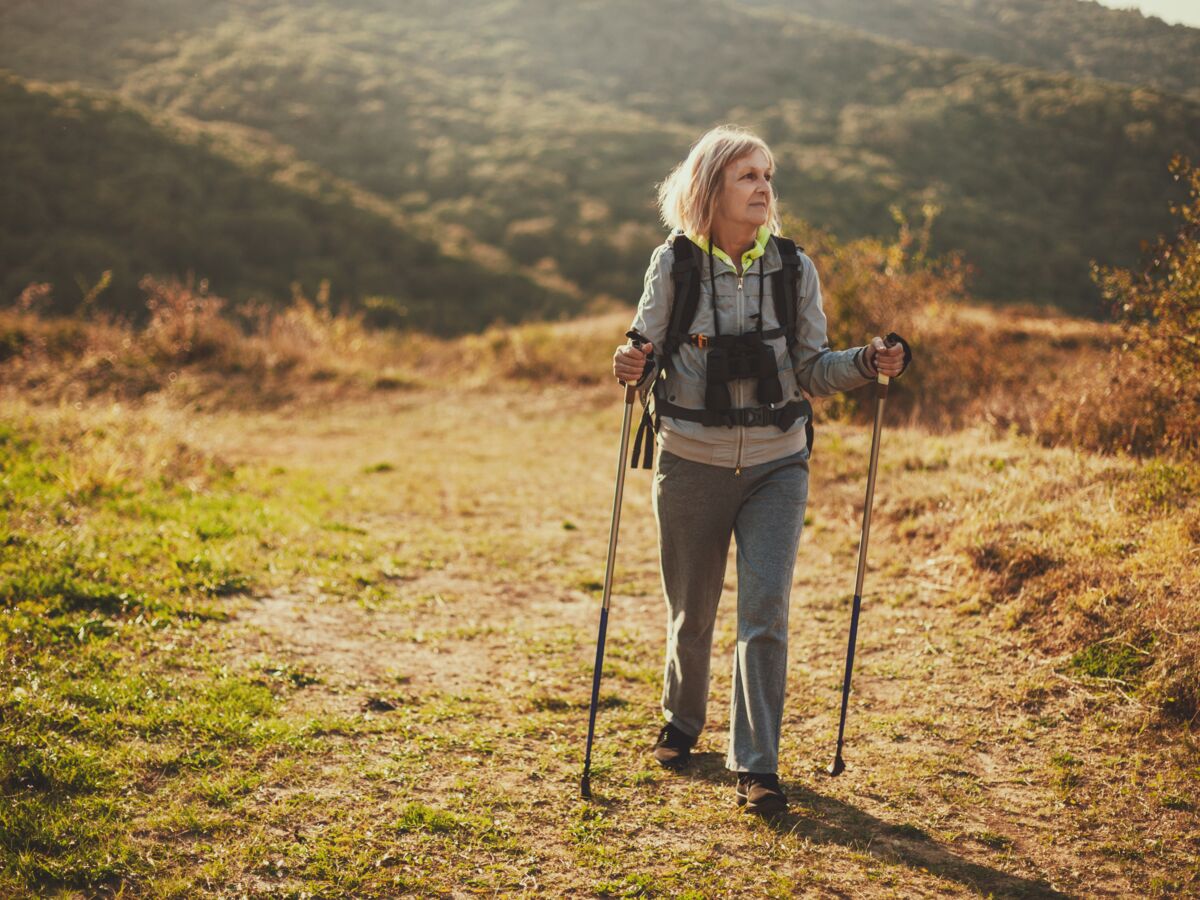No Nordic walking without poles, they are essential for propulsion. But they must be specifically designed for this practice. Especially since it will be necessary to acquire the good technique of planting a stick. Indeed, as Renaud Roussel, Nordic walking instructor* points out, “the sticks make it possible to go from two driving limbs to four driving limbs, it is exactly the efficiency that a four-wheel drive car provides compared to a two-wheel drive car”. For real, Nordic walking gives you a new boost!
Good support to start
When you start, the best thing is to sign for a few lessons, in a group, it’s more fun to learn the right technique. “It is easy to acquire reassures Renaud Roussel ; a certified instructor will teach the intricacies of the various crossing techniques“.
There is indeed a method and technical movements linked to the relief and the obstacles encountered: you don’t go around a tree trunk on the ground, you use sticks to propel yourself over it, you don’t get your feet wet during a ford, we jump using sticks as poles, downhill we use sticks as stabilizers.
Once the basics are understood, a certain number of hours of practice are necessary before leaving alone with proven effectiveness.
Many clubs affiliated with different multi-sport federations offer Nordic walking: French Federation of Athletics, French Federation of Physical Education and Voluntary Gymnastics, French Federation of Hiking, French Federation of Sports Retreat…
The right move to take
“The whole technique lies in range of motion : frank and powerful push of the arms backwards to propel forwards. Many Practitioners Don’t Do It Right“, observes the monitor.
The stride of Nordic walking is longer than for traditional walking. As with any active walk, the opposite arm and leg are moved forward simultaneously. The planting of the stick is done at the level of the rear foot, which means that the angle of the stick is approximately 45° with the ground. the push in the strap is done as soon as the stick is planted (free and lively) and you project yourself forward by opening your hand and letting the stick go behind you. The legs are relieved by the propulsion provided by the arms, because it is the stick that pushes forward.
The arm should finish stretched back. Often, practitioners propel too little and come back too quickly forward and especially too far forward; technology is far behind.
When the thrust is frank, the step lengthens automatically, it’s obvious, and the bust straightens, head held high, chest forward. It gives a little “haughty” air to good walkers. Suddenly, we pick up speed and with each push of the arm, the feeling of propulsion upwards and forwards is clear, this feeling is particularly exhilarating!
Where to practice Nordic walking?
Everything is possible: countryside, forest, mid-mountain, sand dunes, muddy trails, rocky terrain, etc. If the urban environment is not the most interesting (in terms of sensation and oxygenation), it is still possible thanks to the tips that are sold with the pair of poles.
Download a virtual guide
All hiking apps are relevant for Nordic walking: MyRando (the official application of the French Federation of Hiking) or Visio Randoare two must-haves and are free.
The healthiest sticks
“It’s the most beneficial and least harmful activity, when you have back pain or lower limbs”points out Dr. Patrick Sichère, rheumatologist and consultant at the Pain Center of the Lariboisière hospital.
- They reduce the weight supported by the legs by 30%. Proper technique can significantly relieve pressure on the lumbar spine, hips, knees and ankles.
- The push of the arms engages muscular chains which do not work in classic walking: it is therefore 80 to 90% of the muscles of the body that are solicited in Nordic walking. Upper body work increases energy expenditure by 20 to 40% compared to walking without poles.
- The vibrations induced by the stick on the ground favor the fortification of the bones.
- Movement of the arms and torso promotes lung amplitude and oxygenation (about 60% more compared to brisk walking).
3 tips for choosing the right poles
- To find your size: arm at right angle, elbow to body, forearm horizontal. The height of the hand gives the size of the stick. “This is what we indicate to beginners, for my part, I advise to take a size a little above (the angle a little closed between arm and forearm), the pole is therefore a little largerexplains Renaud Roussel; this allows you to plant the stick further back (not to get your foot caught in the stick!), and to push further behind.”
- In aluminium, they will be cheaper, but heavier and less propelling, so it is better to prefer carbon fiber poles for more feeling.
- Check that removable rubber tips (for hard floor) are supplied with. Good to know : Nordic walking poles are non-retractable.
*Physical trainer (DE) and certified ECIM (European College of Integrative Medicine). www.renaudroussel.com
Read also :
⋙ Nordic walking: fun, friendly and inexpensive
⋙ Nordic, Afghan, aquatic… Which walk to choose?
⋙ Nordic walking: what are its benefits and how to get started?
